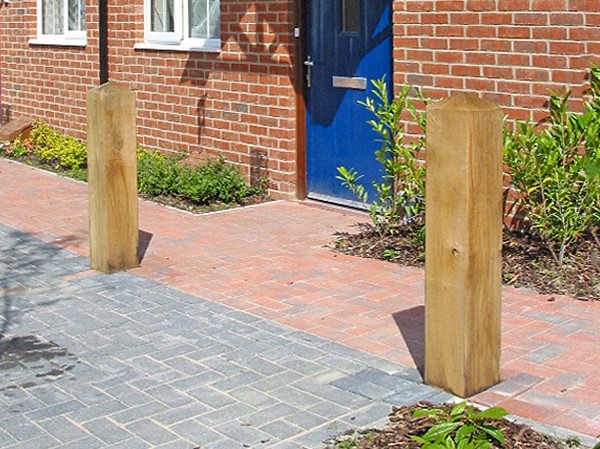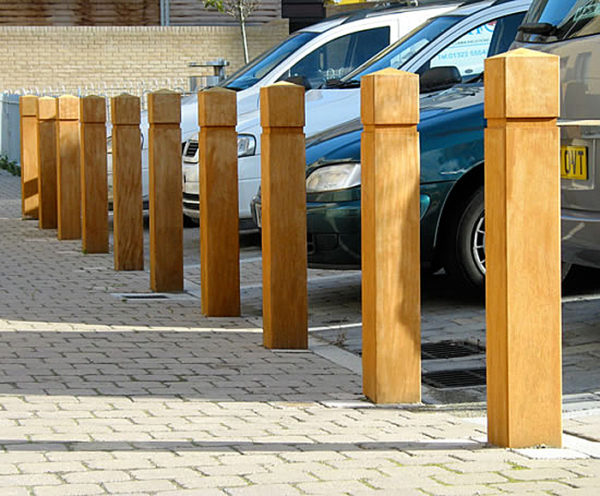Why Timber Street Bollards Split – And Why It’s Normal

If you’ve recently purchased or specified timber street bollards for a park, public path, or car park, you may notice that the timber begins to split or crack after installation. While this can seem like a flaw at first glance, it’s actually a completely natural part of how wood behaves outdoors — and not a cause for concern.
At Orchard Street Furniture, we supply high-quality timber bollards throughout the UK and often get asked, “Why has my wooden bollard split?” This blog explains why this happens, why it’s expected, and why it doesn’t impact the performance or lifespan of the product.
What Causes Timber to Split?
Wood is a natural, organic material. It expands and contracts as it takes in or loses moisture, particularly during seasonal changes in humidity and temperature. This natural process causes:
- Surface splits
- End grain cracks
- Radial or tangential movement
These splits — also called shakes or checks — are a normal characteristic of air-dried or pressure-treated timber used in outdoor furniture, including bollards.

Is Splitting a Sign of Poor Quality?
No. Timber splitting is not a defect. It’s simply how timber behaves when exposed to the elements.
In fact, splits are often expected and accounted for in product design. High-quality street furniture made from seasoned timber is chosen precisely because it can withstand these changes without affecting structural integrity.
At Orchard, we select timber species and treatments that maintain strength and stability even as the wood moves naturally.
Does It Affect Performance or Safety?
Absolutely not. Splits do not weaken the bollard or compromise its functionality. Timber bollards that split:
- Remain structurally sound
- Continue to serve as effective vehicle or pedestrian barriers
- Retain their design lifespan when installed correctly
We’ve supplied bollards to schools, councils, parks, and public highways for years — with splitting being both expected and acceptable.

How We Minimise Splitting at Orchard
While splitting is natural, we take steps to minimise excessive movement:
- Use seasoned, air-dried or kiln-dried timber
- Apply preservative treatments for outdoor durability
- Offer rounded or chamfered tops to reduce moisture ingress
- Specify hardwood options where less movement is desirable
Tips for Specifiers and Installers
If you’re specifying or installing wooden bollards, keep these tips in mind:
- Expect Some Splitting
Educate stakeholders early — it’s better to set expectations than treat it as a surprise.
- Choose the Right Timber
Hardwoods tend to split less than softwoods, but both perform well with the right treatment and design.
- Don’t Paint Over Splits
Allow the timber to breathe. Sealing large cracks can trap moisture and cause internal rot.
- Avoid Over-Tightening Fixings
Let the wood move freely. Over-fixing can encourage splitting in fixed positions.

Order Timber Bollards from Orchard Street Furniture with Confidence
We offer a wide range of timber bollards suitable for:
- Car parks and driveways
- Parks and green spaces
- Cycle paths and public walkways
- Heritage and conservation areas
All our timber bollards are:
- Made in the UK
- Available in custom sizes and finishes
- Designed to perform long-term, even with natural splits
Need Timber Bollards for a Project?
Contact Orchard Street Furniture to request a quote, order samples, or speak to our team about the best timber bollard for your site.
- Trusted by councils, contractors, and design teams nationwide.
- Durable, attractive and 100% fit for purpose – splits and all!
Torn between choosing timber bollards or metal bollards? Well we have a blog that can help your decision! Read it, here…
